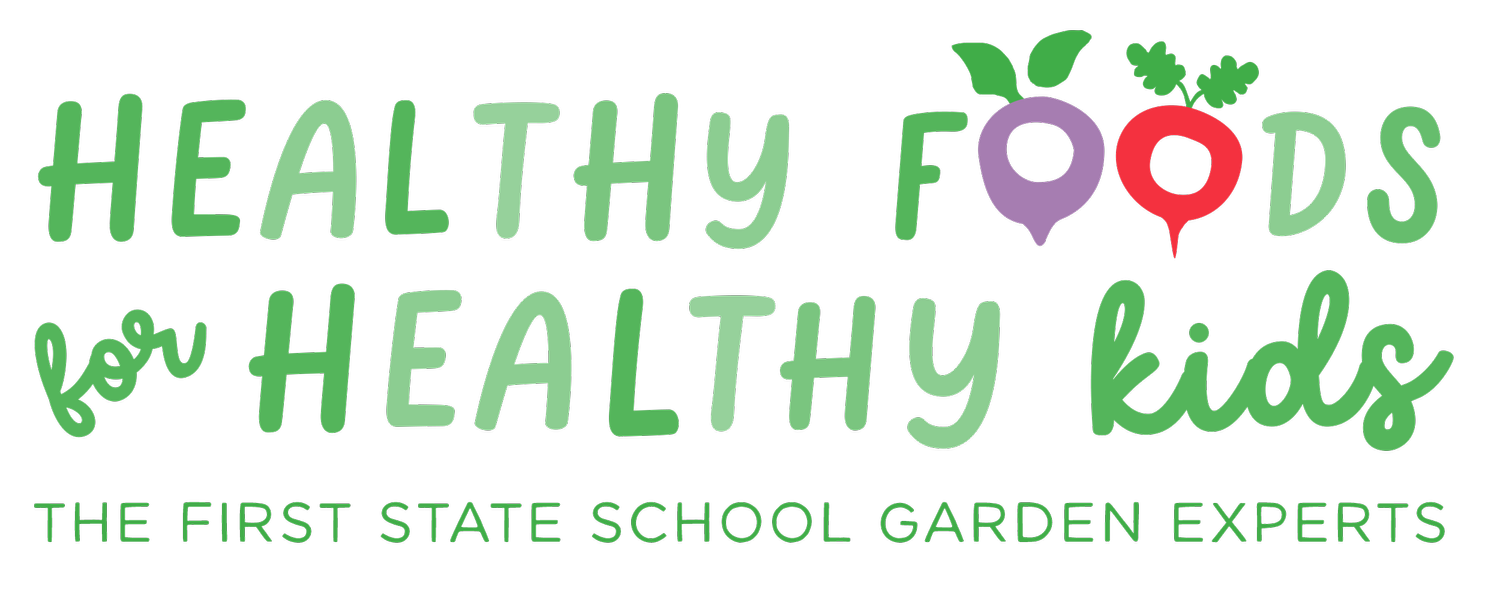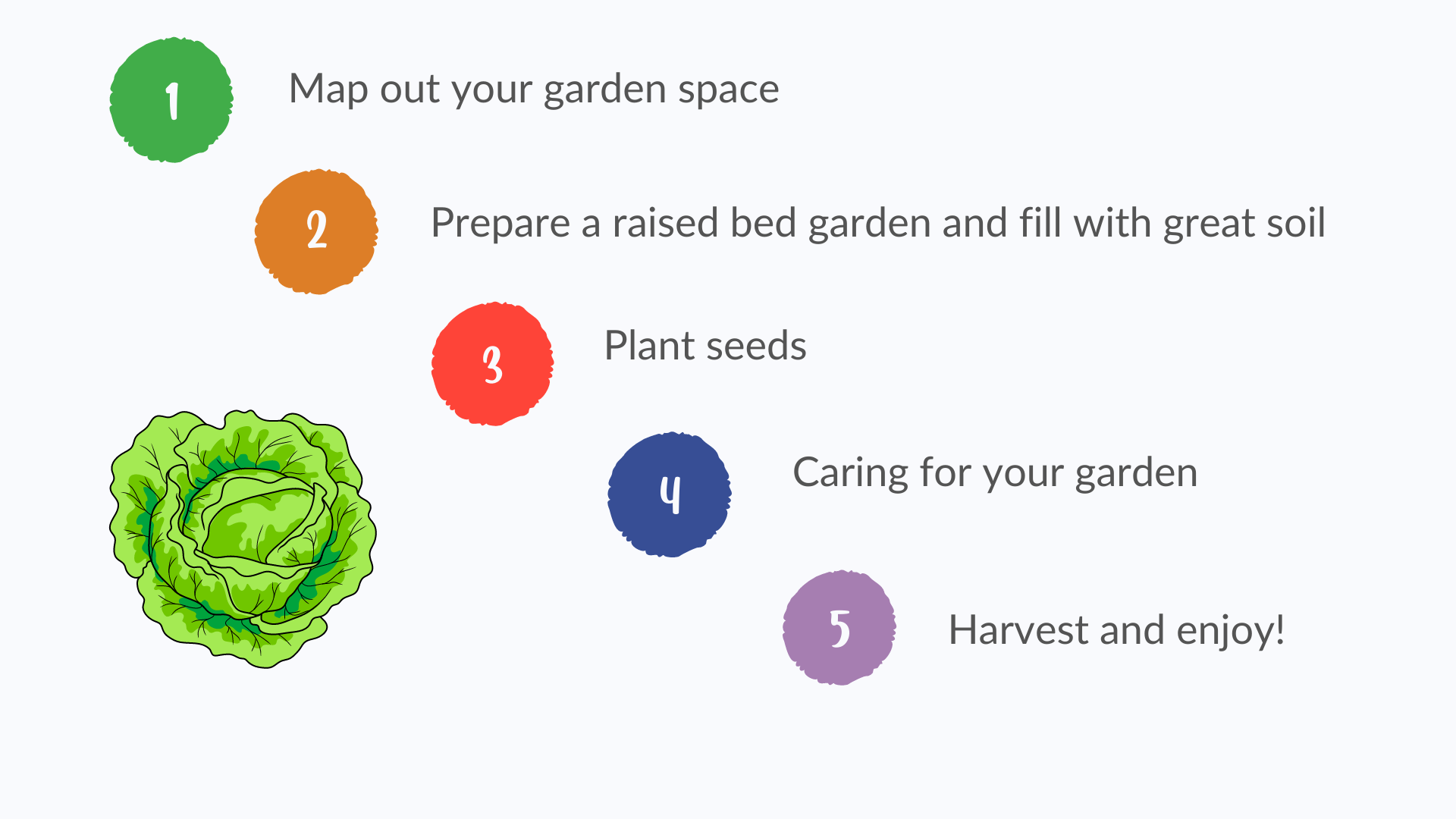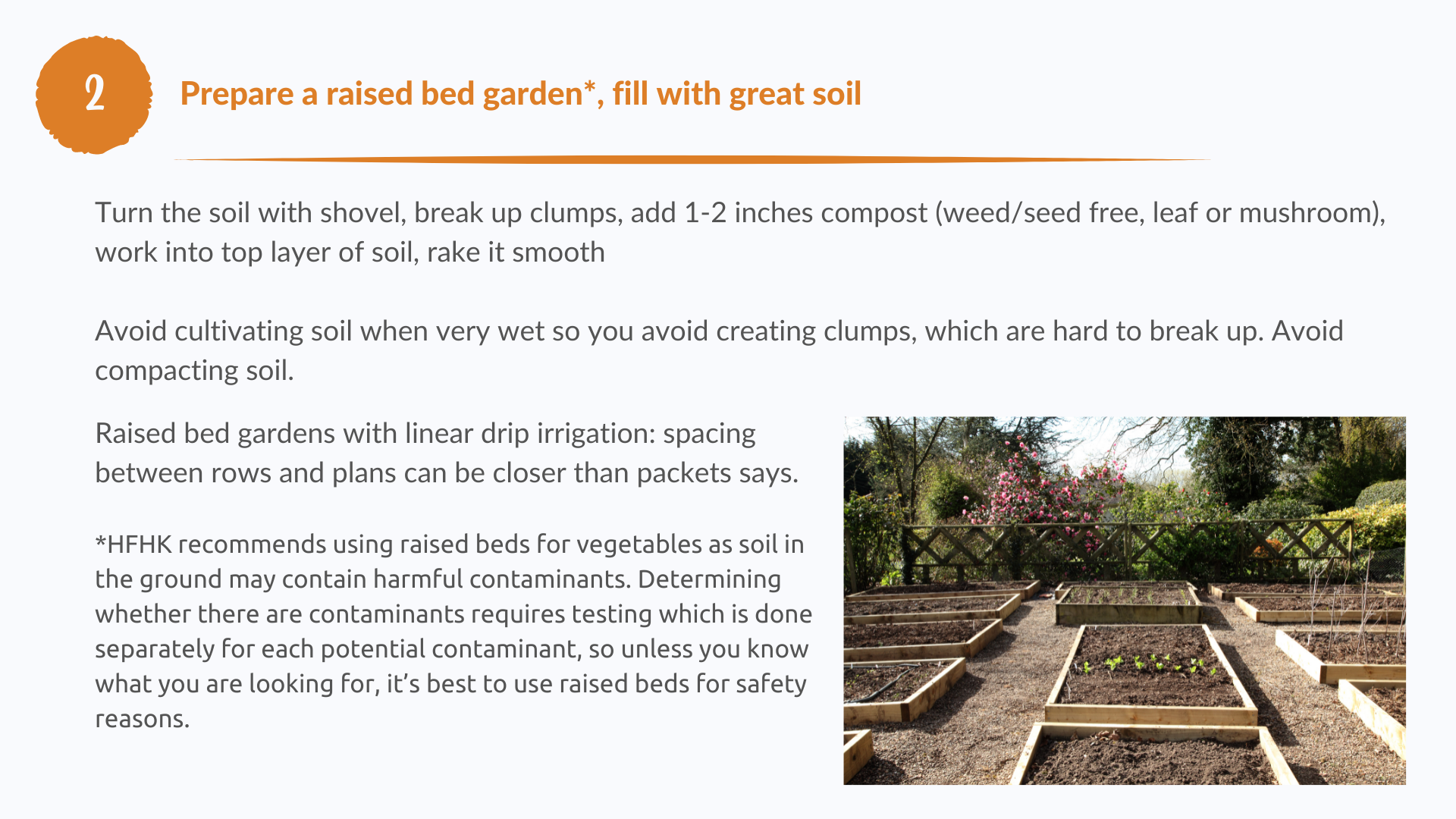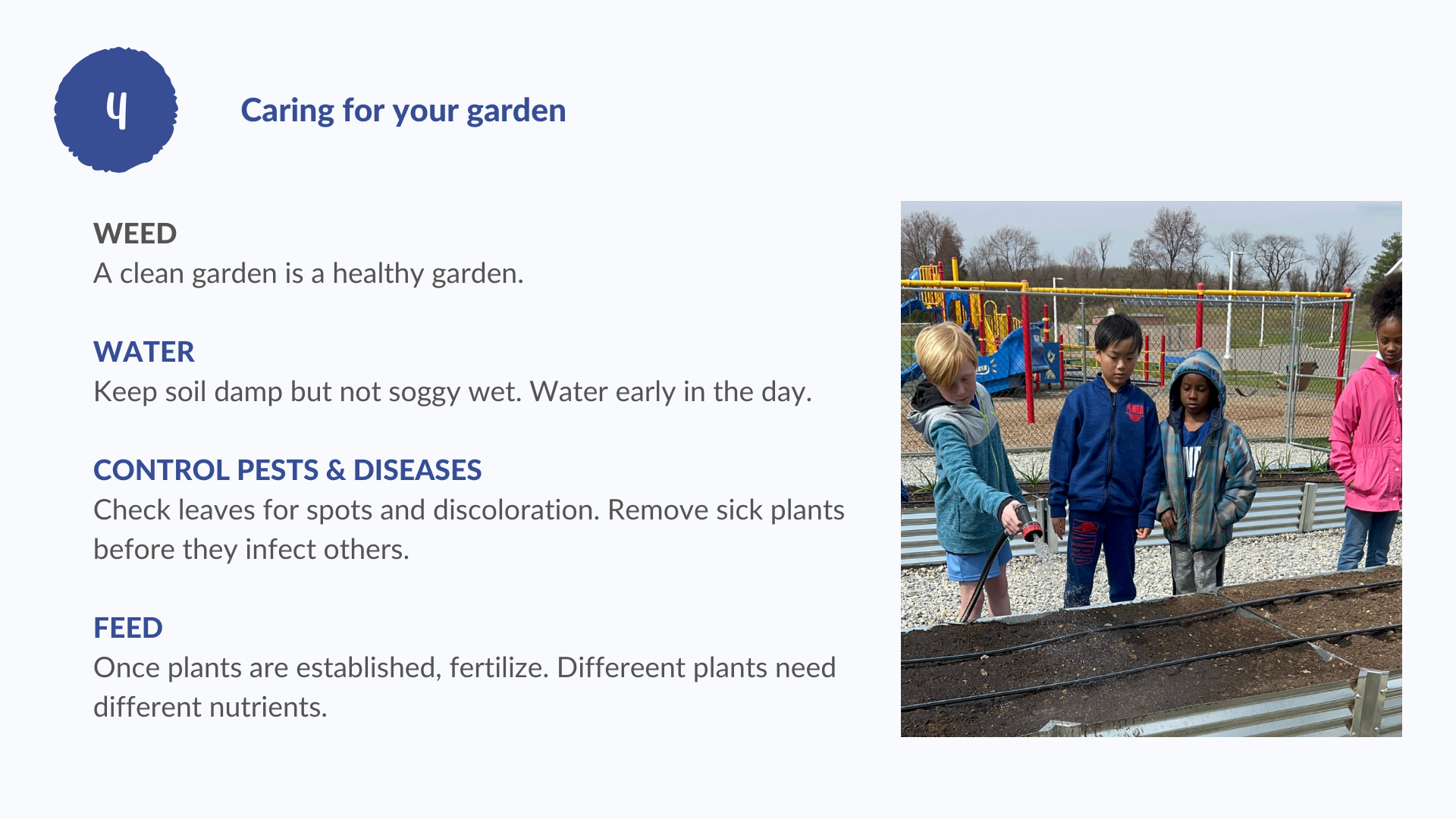OUR GARDENING TIPS FOR YOU
Gardening can be a fun outdoor activity for all ages! Starting a garden for the first time can be daunting. With a little education and tips from your “First State Garden Experts”, the next best thing to do is dig in. Based on our experience with school gardens, we gathered simple tips and resources to make your gardening experience easier and less scary.
Another great way to learn to garden is to volunteer to help with an existing HFHK school garden. Sign up on our Volunteer page. We are always adding new schools. Read more below about our program and which schools currently participate.
How To Start A Home Vegetable Garden
Tips and insights from The First State Garden Experts
A Word About Soil
If you start with good quality, weed-seed free soil, your gardening experience will be delightful. If you don’t, you will have years of heartaches. To avoid all this we recommend:
Purchase from a reputable soil vendor
Ask for a mix made for growing vegetables in raised bed gardens
Focus on filling your raised beds with a mixture of half soil and half compost
Do not accept donations of compost or soil unless you know it is weed/seed free. We’ve already done that experiment for you, and trust us, it’s not worth it. In our area (northern Delaware) the soil vendors have mixes that are 50% mushroom compost and 50% topsoil. If you don’t have a bulk supplier, you can buy bagged product.
Stay away from potting mix with peat moss. It is harvested from bogs, which sequester huge amounts of carbon dioxide. Harvesting and using peat moss, therefore, contributes to global climate change. For this reason, there are some bans on using it, and some suppliers have developed alternative products.
Go with the 4 ft x 8 ft (or up to 12 ft) x 12-inch bed frame.
Do not make the bed wider than 4 ft, so you can reach to the center without stepping in the soil. You want soil that will stay loose, providing plenty of oxygen for the plant roots. If you step in it and compact the soil, you defeat the purpose.
Make the 4” x 4” corner posts 12” rather than 16”. In the process of leveling the bed, you usually will need to dig into the soil a bit, and that will be enough to anchor the bed in place.
Place a piece of landscape fabric under the bed before you fill it with soil. Cut the landscape fabric so that it is 6” larger than your bed on each side, so the edges should extend out beyond the outer edges of the raised bed. For example, a 4 ft by 8 ft bed needs a 5 ft x 9 ft fabric. You can piece together narrower fabric, just make sure the pieces overlap by several inches.
Building a Raised Garden Bed
We use raised beds in school gardens to avoid unknown soil contaminants in the underlying soil, as the plant roots will not breach the barrier.
How to Buy Commercial Raised Bed Kits
If they are made of wood, the boards need to be at least 1” thick or they will rot in no time. We recommend using naturally rot-resistant wood, such as cypress or cedar, preferably 2” thick.
You can use “rough cut” cypress or cedar boards, which are usually cheaper, because they have not been dried. Cypress and cedar boards are not chemically treated. whereas pressure treated lumber is chemically treated. Research by Cooperative Extension has deemed the new pressure treated lumber safe, because it is now treated with copper compounds that leach very little into the surrounding soil (as opposed to the old pressure treated lumber, which contained arsenic; a cancer-causing agent).
Harvesting Your Garden
Here are a few video to help in your harvesting journey.
Additional RESOURCES
Here are some of our favorite resources for starting your own school garden.
School Garden Resource Center -Provided by Whole Kids Foundation and FoodCorps, this clever site condenses everything you need to know about starting a school garden in one easy to use web page.
Massachusetts Farm to School – One of our favorites at the moment, this is the most comprehensive listing of resources that we have found. Put together by the Massachusetts Farm To School Project, the website offers resources for school gardens, cooking classes, agricultural curricula, and a list of organizations across the country that describes what each provides and is doing.
Farm To School – This link will take you to the National Farm To School Network’s list of curricular resources.
Appalachian Sustainable Agriculture Project – This organization is doing some great things in North Carolina and the South East region of the US. As the South East Regional Lead Agency for the Farm 2 School Movement, their site offers some great resources for school gardens and other information to connect students with healthy foods.
Cornell Garden-Based Learning – This site features many resources including a downloadable PowerPoint on published evidence supporting the benefits of garden-based education. This presentation is a wonderful and unique resource that people can use to build support for gardens at their own schools.
Collective School Garden Network – This site, offering resources, publications, and other information is the result of a collaboration of public, private, educational, and non-profit organizations in California dedicated to supporting school gardens. For an impressive list of free curricula and their descriptions, spanning pre-K through high school, click here.
Cooking With California Food in K-12 Schools – This site offers a downloadable cookbook from the Center for Ecoliteracy, co-written by award-winning cookbook authors Georgeanne Brennan and Ann M. Evans. Cooking for California Food introduces the concept of the dynamic 6-5-4 School Lunch Matrix, based on six dishes students know and love, five ethnic flavor profiles, and four seasons.
The Edible Schoolyard – One of the catalysts for Healthy Foods for Healthy Kids’ creation, The Edible Schoolyard is an organic garden and kitchen classroom for students in Berkeley, California.
Their website offers a list of resources, including publications, lessons and recipes, and other online resources for gardening and kitchen programs in schools.
Got Veggies? – Got Veggies? is a garden-based nutrition education curriculum that features seven full lesson plans designed to get children excited about eating fresh fruits and veggies. The curriculum includes garden-based activities, recipes, and helpful tips for cooking and eating in the garden.
KidsGardening.org – This site, run by the National Gardening Association, offers resources in grants, fundraising, professional development, and educational tools.
Dig In! – USDA Team Nutrition’s 5th and 6th-grade curriculum for engaging students in growing and eating vegetables.
National School Garden Network – A forum for organizations and individuals that support school gardens.
Life Lab – Life Lab cultivates children’s love of learning, healthy food, and nature through garden-based education. Life Lab is a national leader in the garden-based learning movement.
Delaware Academy of Nutrition and Dietetics – Delaware’s chapter of the Academy of Nutrition & Dietetics provides education program and is involved with nutrition-related legislative issues that impact the public.
PRESCHOOL RESOURCES
Farm to Preschool – Brand new in 2012, from the National Farm to School Network! This includes curricula, model programs and more.
Our RECIPES
Are you looking for ways to incorporate more fruit and vegetables into your family’s diet or use up bountiful garden produce? Friends of HFHK have compiled 10 of our best recipes that help turn yucky into yummy.







